While a kitchen should be the cleanest room in the home, it often takes a second place. However, our health and well-being demand that it should never be neglected, especially when it comes to essential details like plumbing. Indeed, maintaining hygienic kitchen plumbing is undoubtedly a vital facet of kitchen sanitation and home hygiene in general.
Contents
- Abandoning Mould and Mildew
- Upgrading Kitchen Hygiene Standards
- Kitchen Plumbing: Hygiene’s Backbone
- Kitchen Plumbing’s Role in Safety
- Appliances and Kitchen Hygiene
- Saying No to Clogged Drains
- Identifying Unusual Plumbing Sounds
- Signs of Looming Water Heater Issues
- Navigating Common Toilet Troubles
- Kitchen Sink Cleaning Methods
- Basics of Garbage Disposal Cleaning
- Ensuring Clean and Clear Drains
- Adieu Mould and Mildew
Abandoning Mould and Mildew
Mould and mildew are persistent problems that pose significant health risks. According to research by the World Health Organization (WHO), dampness and mould exposure in homes can increase the risk of respiratory symptoms by up to 50%. Other health problems include respiratory infections, asthma, and allergic reactions.
Surprisingly, an NSF International study found that kitchen sinks have higher concentrations of bacteria than almost any other place in the home – including the flushed toilet. That’s why routine cleaning isn’t enough. We must adopt preventative measures like regular plumbing inspections from trusted service providers like Dan’s Plumbing.
Upgrading Kitchen Hygiene Standards
The Environmental Protection Agency (EPA) recommends keeping indoor humidity levels between 30% to 50%. By following this guide and keeping your kitchen well-ventilated, you can reduce mould growth significantly. This balance requires appropriate installations, such as exhaust fans and windows for continuous air circulation around your sink area.
Regular maintenance of appliances connected to your plumbing system is another outstanding measure that guarantees improved hygiene standards. Unmaintained water heaters or improperly installed taps can create pockets of stagnant water leading to increased bacterial growth and eventually mould and mildew.
Finally, the adoption of proper waste disposal practices is essential. Daily cleaning and disinfection using suitable household cleaning chemicals significantly deter mould and mildew buildup.
Kitchen Plumbing: Hygiene’s Backbone

The importance of maintaining pristine kitchen plumbing cannot be overstated. A smoothly functioning and well-maintained kitchen plumbing system can significantly enhance overall hygiene. And yet, it is often overlooked.
Evidently, a well-functioning tap valve, sink, and drain are key towards ensuring a steady flow of clean water and effective sewage disposal. But these components need regular attention from knowledgeable professionals. The superior service offered by Dan’s Plumbing ensures these elements perform optimally thus enhancing your hygiene efforts.
Kitchen Plumbing’s Role in Safety
Beyond cleanliness, efficient plumbing is directly linked to kitchen safety. Faulty plumbing can lead to water leaks which promote mould growth, compromising not only health but also physical safety. For instance, leaking pipes may leave slippery spots on the floor leading to injuries from falls.
Additionally, defective water heaters pose significant risks; lower-than-recommended temperatures may foster bacterial growth while too hot water might cause scalding. Leaks can also lead to poorer air quality due to increased humidity levels, eventually damaging your home’s infrastructure and promoting the spread of mould spores.
Your kitchen’s sanitation and safety should be beyond question when you enlist the help of a reputable plumber. Regular check-ups will keep your kitchen hazard-free by keeping tabs on potential issues before they escalate.
Appliances and Kitchen Hygiene
Home appliances such as dishwashers and refrigerators have integral roles in kitchen hygiene. Poorly maintained dishwashers may trap food particles in crevices while a defecting refrigerator might facilitate the growth of harmful bacteria due to fluctuating temperatures.
Maintaining optimum hygiene is not just about keeping these appliances clean, but also ensuring their plumbing connections are properly done and frequently checked for leaks or blockages. The mildew-conducive environment inside appliances linked to plumbing can only be prevented by regular check-ups from experienced plumbers.
Remember mould and mildew occurrence in these typically damp locations is hardly surprising. Therefore using reputable products recommended by well-known organizations like The Plumbing Contractors Association (PCA) helps mitigate the potential risk of mould and mildew growth.
Saying No to Clogged Drains

One of the key contributors to a hygienic kitchen is a well-draining sink. Clogged drains are not merely inconvenient; they also pose substantial hygiene concerns. Stagnant water in sinks can rapidly become a breeding ground for harmful bacteria, promoting the growth of mould not only in your sink but also damaging surrounding surfaces.
Regular drain cleaning should be part of your home maintenance routine. But sometimes, you may need professional intervention, particularly if there are persistent clogs or slow drains. Professional plumbers like Dan’s Plumbing have the expertise and equipment necessary to clear stubborn blockages safely and efficiently.
In addition, consider installing drain screens to prevent larger pieces of kitchen waste from clogging your pipes. In doing so, this simple action will promote good water flow while preventing the mess that comes with unclogging processes.
Identifying Unusual Plumbing Sounds
Creaks and groans from your plumbing system can be a sign of potentially significant problems. For instance, banging or clanging noises may indicate loose pipes or blockages that can eventually cause leaks, leading to the growth and spread of mould and mildew.
Listen out for changes in the sound after using appliances connected to your plumbing or immediately after turning off your tap valve. Unusual bubbling or whistling noises might signify air in your pipes – a common precursor to leaks.
When maintained by experienced plumbers like Dan’s Plumbing, these warning signs are always identified and potential disasters prevented. By merely being more attentive to these telling sounds, you’ll be taking a huge step towards bidding farewell not only to mould and mildew but also to major plumbing repairs.
Signs of Looming Water Heater Issues
Before you bid farewell to mould and mildew, it’s crucial to recognise the signs of looming water heater problems. Keeping your plumbing hygienic goes hand in hand with maintaining your water heater. Even though we often overlook it, this appliance plays a pivotal role in preventing mould and mildew.
When the water temperature fluctuates or your hot water supply is limited, you could be on the brink of a potential crisis. Water leaks can lead to unwanted moisture, creating an ideal environment for mould growth. In fact, an EPA guide estimates that about 10% of commercial buildings in the United States have damp conditions that may be encouraging mold growth. Don’t dismiss any strange noises coming from your water heater either. These could signal sediment build-up needing immediate attention.
Remember seeing discoloured or rusty water? It’s a tell-tale sign of impending water heater issues as it indicates internal tank corrosion which needs immediate attention. Similarly, look out for murky or sandy water as this implies sediment has built up in your tank. Lastly, if hot water tastes metallic, treat that as a warning sign too.
To prevent issues with your water heater and decrease mold, it’s essential to have routine maintenance checks in place. An annual tune-up by a professional ensures smooth functioning and helps control moisture levels, reducing the chances of mould formation.
Navigating Common Toilet Troubles
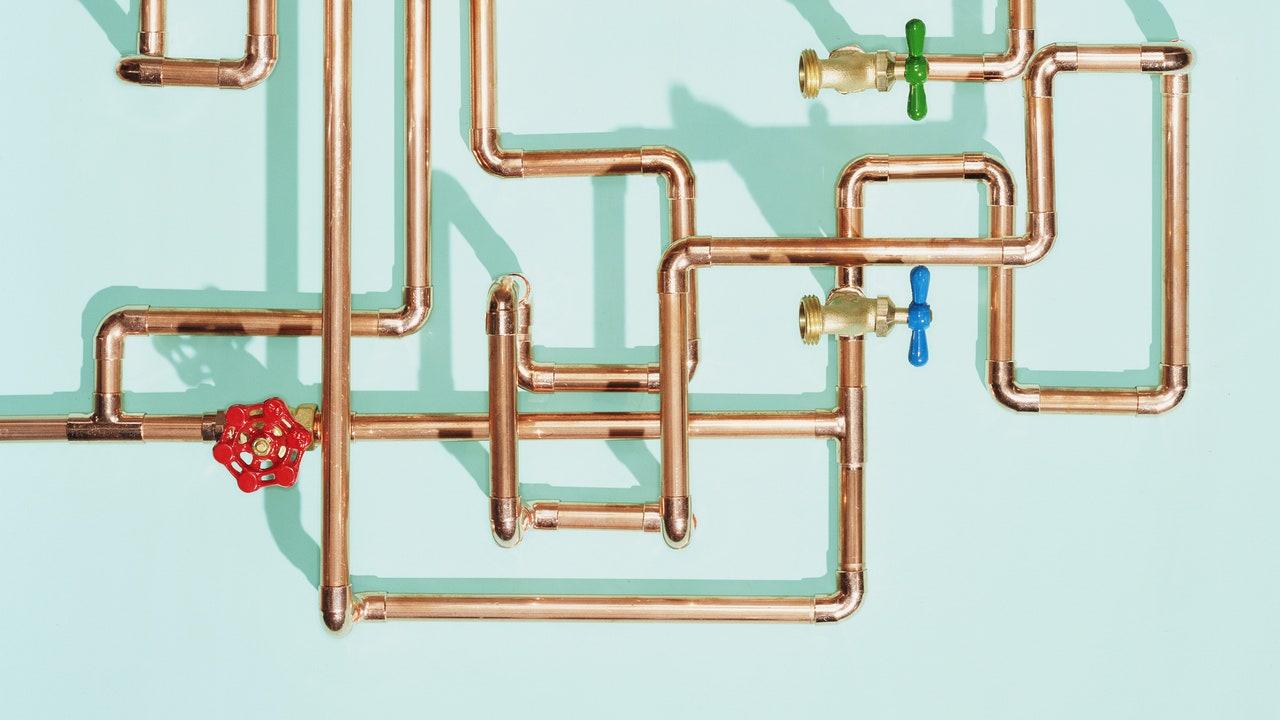
We all use toilets daily, so we must keep them hygienic and avoid common toilet troubles that contribute towards unhealthy moist environments. Most common toilet issues stem from blockage due to inappropriate items flushed down, leading to sewage backup which increases moisture and encourages mould growth.
Next, if your toilet keeps running long after you’ve flushed it, it may be wasting water and creating unnecessary humidity in the bathroom. According to the Environmental Protection Agency (EPA), indoor humidity levels should be kept between 30% and 50% to reduce the growth of mould and mildew.
Warped or discoloured flooring around the toilet indicates a hidden leak that could breed bacteria and welcome mould. Lastly, cracks in your toilet bowl or tank can cause water to seep, escalating moisture levels. Be proactive and look for cracks regularly — even hairline ones.
Navigating these common issues and preventing them from happening can save you from extensive damage, costly repairs, and growth of mould and mildew leading to potential health hazards like respiratory problems as per the Centers for Disease Control and Prevention (CDC).
Kitchen Sink Cleaning Methods
Keeping your kitchen sink clean is a paramount task in maintaining a hygienic environment. A study by NSF International found that kitchen sinks have higher concentrations of bacteria than almost any other place in the home, including the toilet after it has been flushed. Therefore, regular cleaning is essential.
Your first step should be daily rinse-offs. The act is simple but very effective when combating bacteria build-up. Use a mixture of warm water and mild dish soap, scrub all around for a bit, and then give it a nice rinse. Every few days, consider disinfecting the sink with a bleach-water solution to kill off any leftover microbes.
Next, don’t forget about your kitchen drain and garbage disposal when performing your cleaning ritual. These places are breeding grounds for germs if neglected. Pour half a cup of baking soda followed by half a cup of vinegar into the drain. Let it fizz for about 15 minutes then rinse it with hot water.
Regularly cleaning your kitchen sink not only prevents mould and mildew but also contributes to overall sanitation, ensuring that your meals are prepared in a clean and healthy environment.
Basics of Garbage Disposal Cleaning
The garbage disposal is yet another often neglected area when it comes to kitchen cleaning. It’s designed for grinding food scraps into small particles that can safely pass through your plumbing system, but if not cleaned regularly it can harbour mould and other bacteria.
For safe cleaning, always ensure the disposal is switched off at the power source first. A simple but effective method for cleaning includes using ice cubes and coarse salt. The abrasive mixture helps clean off grease and sludge taken from plates.
Baking soda and vinegar can also be used to clean and deodorise your garbage disposal. Pour half a cup of baking soda followed by a cup of vinegar into the disposal then let the mixture fizz for about 10-15 minutes before flushing with hot water.
By following these steps, your garbage disposal will stay mould-free and run smoothly, contributing to overall kitchen hygiene.
Ensuring Clean and Clear Drains
No mould farewell would be complete without discussing drains. Keeping them clean and clear is non-negotiable in maintaining kitchen sanitation.
Pouring hot water down your drains once every week can significantly control the onset of mould growth by nipping problematic blockages in the bud. However, use this method cautiously as constant exposure to boiling water might damage some pipes.
You should also consider using a zip-it tool or plumber’s snake to physically remove blockages. In addition, a proven natural solution involves mixing half a cup of baking soda with an equal amount of vinegar to create your very own homemade drain cleaner.
If you face persistent drain issues despite your best DIY attempts, it might be time to engage a plumbing professional. Clear drains contribute significantly to a healthy, mould-free environment.
Adieu Mould and Mildew
In conclusion, saying goodbye to mould and mildew in your kitchen and home involves adopting regular maintenance practices and timely interventions. By navigating common toilet troubles, ensuring clean drains, focusing on kitchen sink hygiene, and understanding water heater signs, you can keep mould at bay and promote a healthier environment. Your efforts now will pay off in maintaining the longevity of your home appliances and plumbing system whilst safeguarding your family’s health.
Related posts:
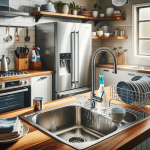 Keeping Your Kitchen Sparkling: Easy Hacks from Dan’s Plumbing for Busy Aussies
Keeping Your Kitchen Sparkling: Easy Hacks from Dan’s Plumbing for Busy Aussies
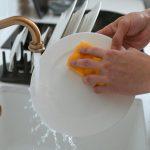 Eco-Friendly Kitchen Plumbing: Simple Tips to Save Water
Eco-Friendly Kitchen Plumbing: Simple Tips to Save Water
 Plumbing Peace of Mind: Professional Preventative Maintenance for Your Home
Plumbing Peace of Mind: Professional Preventative Maintenance for Your Home
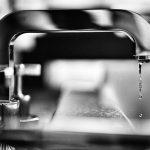 Dripping Tap Driving You Crazy? Dan’s Plumbing Can Fix It for a Peaceful Kitchen
Dripping Tap Driving You Crazy? Dan’s Plumbing Can Fix It for a Peaceful Kitchen
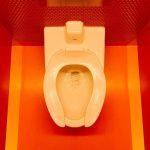 Toilet Troubles? Do Not Fret, Dan’s Plumbing Has the Solution!
Toilet Troubles? Do Not Fret, Dan’s Plumbing Has the Solution!
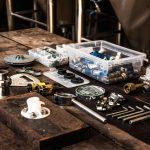 Confessions of a Plumber: Tell-tale Signs Your Sydney Home Needs Our Plumbing Expertise
Confessions of a Plumber: Tell-tale Signs Your Sydney Home Needs Our Plumbing Expertise



